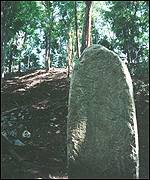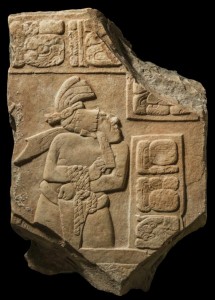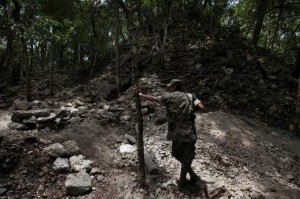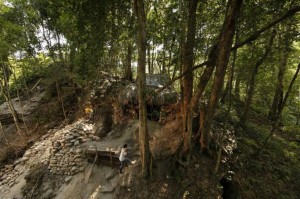The Mayan people, who are indigenous to Mexico and Central America, are publicly perceived as being one the most influential cultures of the Archeological world. While their culture may not be as mysterious as the public imagination believes, it’s slowly being altered by a big issue plaguing archeological sites, looting. As early as 1970, the Mayan city of Xultún , located in northern Guatemala, has been plundered by looters referred to locally as “huechoros”. These huechoros craved tunnels into many of the pyramids adorning the Mayan city and used the tunnels to access the artifacts stored inside. From there the artifacts are takened and placed on the black market to be sold illegally to the affluent for personal want or for display in institutions like museums. The looted materials included stone figurines and statues, hieroglyphic panels, ceramic pottery, and jade jewelry. Though the amount of looting has decreased in the passed years, archeologists are still trying to fully grasp the damage incurred by the huechoros.
Huechoros, who are often just individuals desperate for money, have inflicted grave harm on not only culture of the Mayans but ultimately their extensive history. The city of Xultún was once a major metropolitan center filled with the rich art, culture, and religion that have contributed to the Mayans identity. For example, stone tablets known as Stelae have been frequent favorites of the looters. These tablets describe the deeds of the Mayan Kings and were seen as very valuable to buyers, so looters would divide the tall stones into small pieces. With the destruction of those tablets came the destruction of Mayan history. No longer are archeologists able to visit sites within Xultan pyramids without the telltale signs of looters being present. Not only aren’t artifacts not being found but the tunnels have allowed for rainwater to travel into the structures damaging the remaining artifacts. These looters aren’t just stealing artifacts but also the existence of the people who left them behind.
The government, in conjunction with archeologists, has enacted several measures to halt the looting of the pyramids. Since a majority of the looting is due to financial strife resulting from Guatemala’s Civil War in the 1960’s, the government has enacted new stable avenues of commerce for communities in the jungle. They have also stationed Guatemalan military officials to patrol the city of Xultún on a 24/7 schedule. Archeologists, on the other hand, are now re-excavating the tunnels left behind by the heuchoros in order to find new artifacts for preservation and future reference. There has even been talk of Guatemala arguing for repatriation of stolen artifacts now displayed in American and European museums and galleries. Though many may only view the stolen artifacts as souvenirs to the Mayans once thriving civilization, they also represent the rich history of a prevalent culture. Archeologists are striving to rediscover and preserve the identity of a people whose culture served as a prime example for the modern civilizations we call home today.
Links:
http://ambergriscaye.com/pages/town/article21.html
Further Reading:





